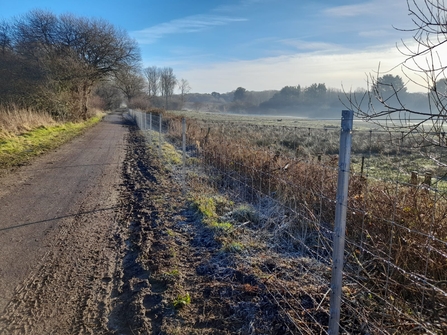New fences improving grazing and water management
Since acquiring Newchurch Moors we have been carrying out works to restore the wetland habitats on the nature reserve. One of the key aspects to our management is grazing by cattle, with animals on site from spring until the autumn. Boundary fences are key in managing livestock, and we have recently been replacing the one fence posts, also reducing the need for internal fencing, grazing as a single open area. The old fence line was difficult to maintain effectively a due to the very wet ground conditions in this area which meant the fence posts rot out quickly and require constant maintenance. The new metal fence also allows ditch edges to be grazed which will help restore habitats and control non-native Himalayan balsam by the cattle. More effective ditch management, allowed by the fences, will aid with water management and help with restoration for target species including water voles, kingfishers and a range of wetland flora and fauna. All of the old fences will be removed when ground conditions allow this spring/summer; currently the ground is too wet to access in some sections.
Once the spring arrives and the vegetation grows up the new fence weather in. We have chosen this type of fencing for a number of reasons including maintenance, stock management, resilience and cost. This fencing will last 30+ years opposed to wooden fence posts which we were on average replacing every 7-8 years. Much of the wood used in the fence posts is chemically pressure treated and we are trying to move away from this material.
Species such as foxes and badgers will find a way under, over or round the fencing. This is not fencing for beavers! Whilst we do have aspirations for restoring beavers to the catchment, this is part of a longer-term project that we hope will be commencing later this year. A key aspect of this will be a wide ranging public and stakeholder engagement programme giving everyone the opportunity to express their views. Look out for more information on this later in the year.

